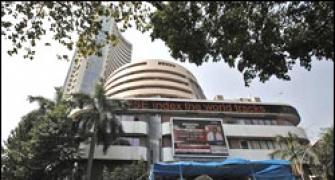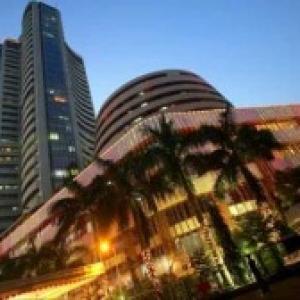The General Anti-Avoidance Rule (GAAR) may have been deferred for a year but many foreign institutional investors (FIIs) do not want to take chances. They are shifting their trading positions to Singapore, where derivatives of India's key equity index, the Nifty, are listed. That is evident in the growing open interest (OI) or trading positions in Nifty futures contracts on the Singapore Stock Exchange (SGX).
That is evident in the growing open interest (OI) or trading positions in Nifty futures contracts on the Singapore Stock Exchange (SGX).
As on date, the SGX Nifty OI is 27 per cent higher than that for Nifty futures on the National Stock Exchange (NSE). The figures are more alarming if one considers the OI in a single month in May as the built-up positions on the SGX are 70 per cent higher than on the NSE.
In May, the SGX Nifty OI was worth over Rs 16,200 crore (Rs 162 billion) while that on the NSE stood at over Rs 9,250 crore (Rs 92.5 billion). As far as three-month contracts go, the Nifty futures OI on the NSE is over Rs 12,750 crore (Rs 127.5 billion).
"The trend of FIIs trading the Indian market in Singapore will continue till there is clarity on GAAR. The government is yet to clarify on the issue involving tax on FIIs under GAAR," said Dharmesh Mehta, managing director of institutional equities at Mumbai-based Enam Securities, taken over by Axis Bank recently.
Market experts say exchange-traded funds and hedge funds are avoiding taking positions in India, as they would be the most impacted by the implementation of GAAR. The most glaring example of this has been the shutting down of its hedge fund and ETF by Australian institutional investor Macquarie in April.
In an email to clients, Macquarie had said instead of trading in the Indian market, they would be trading the same Indian instrument at another exchange located in a foreign land.
"These entities will pay tax to the Singapore government now, which under the 'permanent set-up' provisions will be lower than in India. In addition, there is substantial clarity and confidence in continuity of the taxation rules in that country," Macquarie was quoted as saying.
Earlier, such a shift of trading from India to Singapore was seen in 2008, when the Securities and Exchange Board of India (Sebi) had banned the use of participatory notes (P-notes)
According to Vineet Bhatnagar, managing director of MF Global, trading can shift back to India. "Once there is clarity over tax laws, FIIs will shift back. The advantage of trading in India is that overall there is deeper liquidity available due to local traders and arbitrageurs, which can help FIIs in various other strategies," Bhatnagar said.
The implementation of GAAR would hurt hedge funds, ETFs and P-note holders the most. GAAR puts the onus on companies to prove they are using a specific structure for a commercial purpose and not to avoid tax.
The taxman can question the claims of companies and FIIs. While ETFs are vague structures, P-notes have been criticised for providing a perfect smoke screen for investors operating in a clandestine manner.
Also, after the drama over the Vodafone tax case, FIIs are worried rules are being changed with retrospective effect. FIIs have been using P-notes to take exposure to Indian markets for nearly a decade now. Singapore is a tax haven for foreign funds.
Even top market operators from India, who park their money abroad, prefer to take positions there. The low rate of personal and corporate income tax, only 20 per cent in Singapore, is a further sweetener for unregulated entities to trade on the SGX Nifty. The statutory cost of trading on the SGX is one-fourth of that in India.
Often, a rise in trading volumes of Indian indices in the foreign markets is viewed critically. Higher offshore volumes than the local market may disturb the equilibrium, as domestic traders are at a loss. In 2008, it was noticed that FIIs decided the direction of Indian markets in Singapore and took advantage of major events even before the Indian markets opened for trading.
The Nifty index covers 23 sectors of the Indian economy and over 60 per cent of the total market capitalisation of the underlying bourse, the NSE.










